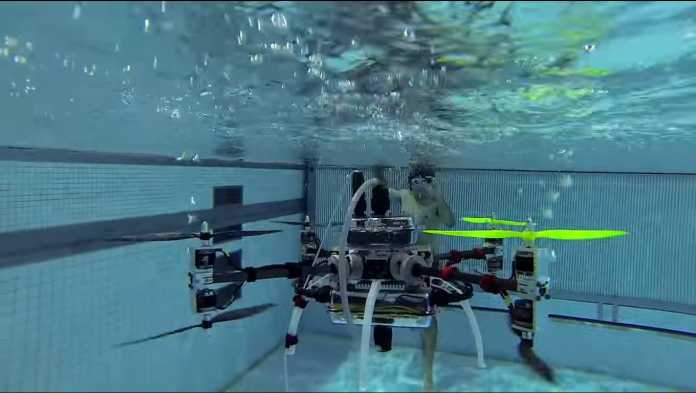The unmanned vehicle can not pass transitions from air to water and from water to air, and was developed with the financial support of the US Navy.
US Navy Drone Transitions From Air To Water And Water To Air
Also Read: How to Remove Shortcut Virus from USB Drives & PC A new type of drone, out of a project of the University of Rutgers in New Jersey, USA, is seeing the light: It is an unmanned vehicle that can indistinct meet perform well in the air and water, no matter what sense. Developed from a grant from the US Navy through the Naval Research Institute, the Navigator can be sent to reconnaissance by air or under water. This project, supported by the US Navy and funded it to the tune of $ 618,000 is led by the team of Professor Javier Diez (Responsible of Mechanical Engineering Department and Aerospace University). If the quadcopter in question is not currently at the prototype stage, the latter remains operational. Navigator has the particularity of being able to fly and move under water without changing appearance. Also Read: How To Install Xposed Framework In Android “There are submarines that can launch things from under the water and then come out and perform a task, but can not return to the water,” explains Marco Maia, a doctoral student at Rutgers who worked on the project. “And you also have aircraft that can serve to launch vehicles into the water, since when they can not get out again. This vehicle does all that,” he adds. About the usefulness of a drone with a considerable versatility, the Navigator may be useful to monitor bridges but also inspect and monitor oil platforms. At present, the prototype is not able to carry payloads and requires a cable to ensure the binding of radio signals under water. The next specificities concerning the development of this drone will equip a camera and a sonar sensor. Also Read: How To Change Working Of Hardware Buttons In Android For the Navy, the great interest in the project lies in some of the uses that could be given to Navigator.


